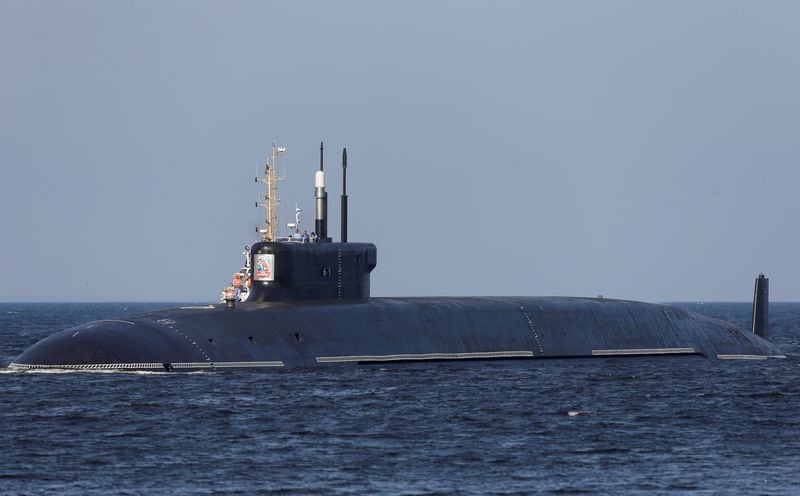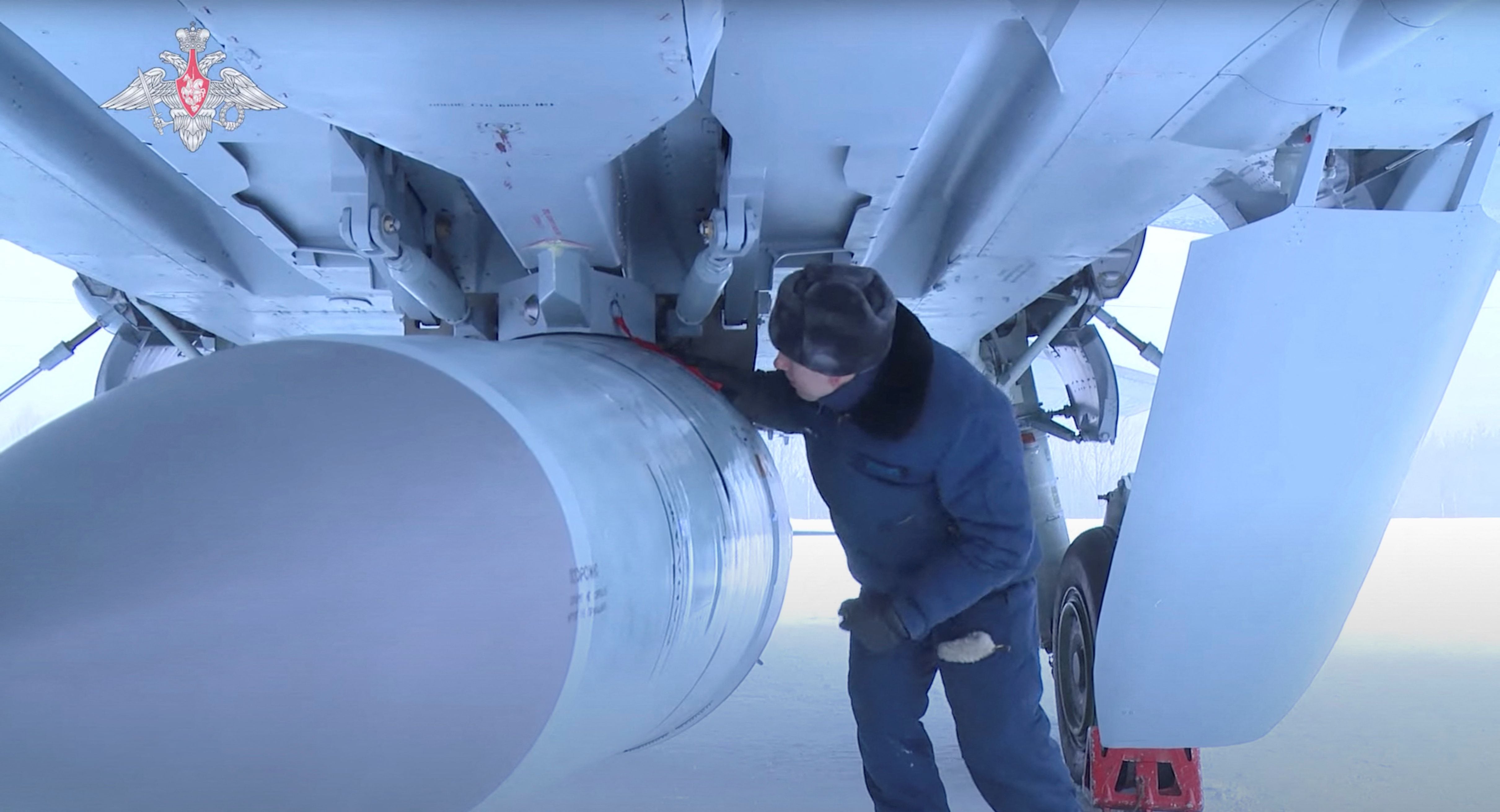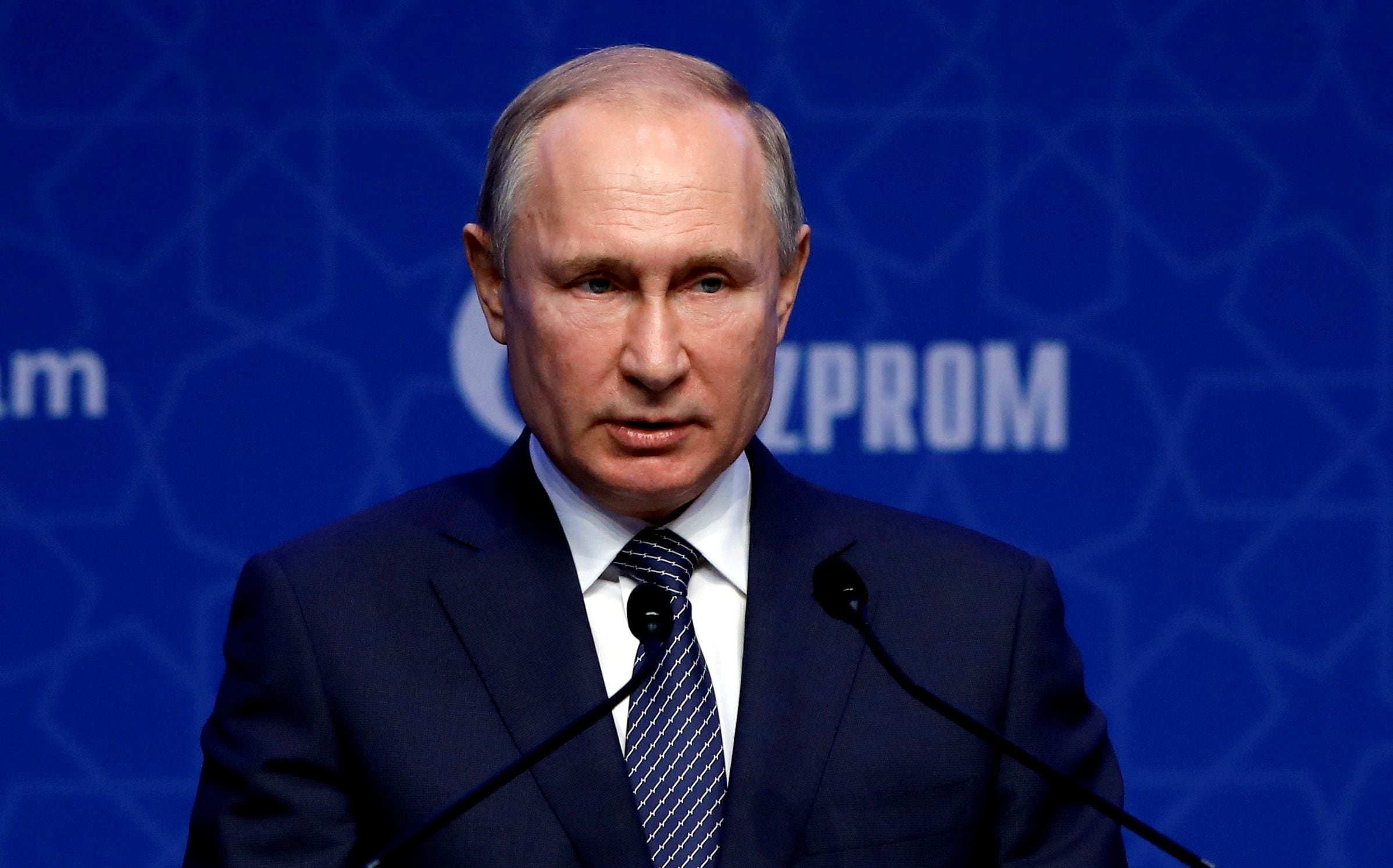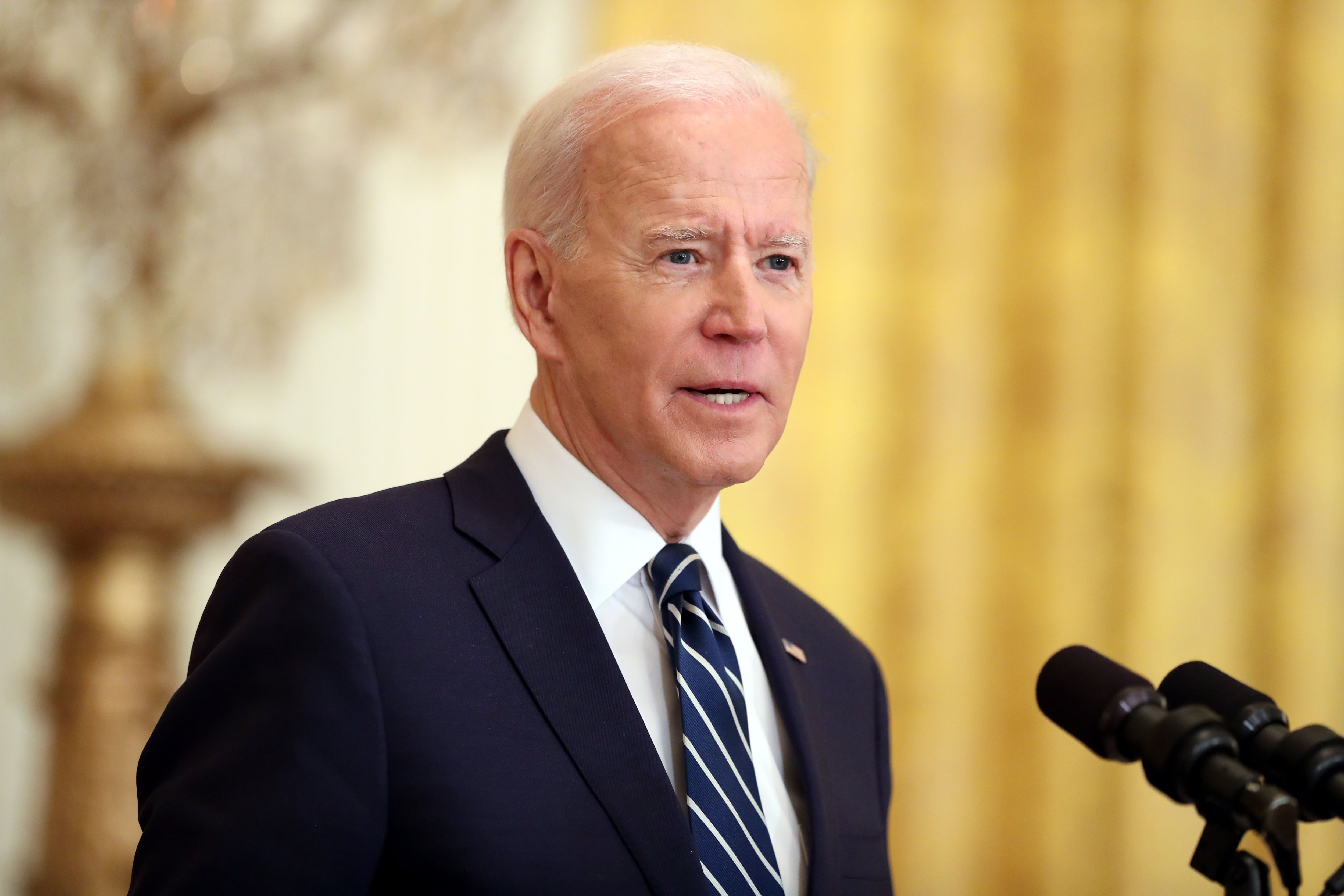
In terms of destructive power, the Cold War giants overshadowed the American atomic bomb that destroyed Hiroshima. Washington's largest test explosion was 1,000 times larger than that launched on the Japanese city, and that of Moscow was 3,000 times larger. On both sides, the idea was to deter enemy attacks by threatening major reprisals, such as mutual assured destruction, also called MAD. The psychological bar was so high that nuclear attacks were seen as unthinkable.
Today, both Russia and the United States have nuclear weapons that are much less destructive: their power is only a fraction of the strength of the Hiroshima bomb; but their use is perhaps less frightening and more assimilable.
Concern about these smaller arms has skyrocketed since Vladimir Putin, in the context of the war in Ukraine, has warned several times about their nuclear power, put his nuclear forces on alert and caused his army to carry out risky attacks on nuclear power plants on Ukrainian territory. The fear is that if Putin feels cornered at any point during the conflict, he will choose to detonate one of his minor nuclear weapons, breaking the taboo established 76 years ago, after Hiroshima and Nagasaki.
Analysts point out that Russian troops have long tried the transition from conventional to nuclear warfare, especially as a way to gain advantage after losses on the battlefield. And the military, they add, who run the world's largest nuclear arsenal, have explored a variety of escalation options that Putin could choose from.
“The chances are low but increasing,” said Ulrich Kühn, nuclear expert at the University of Hamburg and Carnegie Endowment for International Peace. “The war is not going well for the Russians,” he observed, “and pressure from the West is increasing.”

Putin could fire one of those weapons in an uninhabited area rather than at troops, Kuhn said. In a 2018 study, he presented a crisis scenario in which Moscow detonated a bomb over a remote part of the North Sea as a way to signal more lethal attacks to come.
“It feels awful to talk about these things,” Kühn explained in an interview. “But we have to consider that this is becoming a possibility,” he added.
Washington expects more atomic movements from the Russian president in the coming days. Moscow is likely to “increasingly rely on its nuclear deterrence to set the ground for the West and project its strength” as the war and its consequences weaken Russia, Lt. Gen. Scott D. Berrier, director of the Defense Intelligence Agency, told the House Armed Services Committee on Thursday.
President Joe Biden will travel to a NATO summit in Brussels this week to discuss the Russian invasion of Ukraine. The agenda is expected to include assessing how the alliance will respond if Russia uses chemical, biological, cyber or nuclear weapons.
James R. Clapper Jr., a retired Air Force general who served as President Barack Obama's director of national intelligence, said that Moscow had lowered its level of atomic use after the Cold War when the Russian army fell into disarray. Today, he added, Russia considers nuclear weapons to be something utilitarian and not something unthinkable.
“They didn't care,” Clapper said about the time when Russian troops risked a release of radiation earlier this month by attacking the site of the Zaporizhzhya nuclear reactor (the largest not only in Ukraine, but also in Europe). “They came forward and shot him. That is indicative of the Russian attitude of laissez-faire. They don't make the distinctions we make with nuclear weapons.”

Putin announced last month that he would put Russian nuclear forces in “special combat readiness.” Pavel Podvig, a longtime researcher in Russia's nuclear forces, said the alert had probably prepared the Russian command and control system for the possibility of receiving a nuclear order.
It is not clear how Russia exercises control over its arsenal of less destructive weapons. But some US politicians and experts denounced that smaller arms on both sides threaten to upset the global balance of nuclear terror.
For Russia, military analysts point out, avant-garde displays of the least destructive weapons have allowed Putin to improve his reputation as a risky man and expand the area of intimidation he needs to fight a bloody conventional war.
“Putin is using nuclear deterrence to get away with it in Ukraine,” said Nina Tannenwald, a political scientist at Brown University, who recently looked at less powerful armaments. “Their nuclear weapons prevent the West from intervening.”
A global race for smaller arms is intensifying. Although such weapons are less destructive by Cold War standards, modern estimates show that the equivalent of half a Hiroshima bomb, if detonated in downtown Manhattan, would kill or injure half a million people.

The case against these weapons is that they undermine the existing nuclear taboo and make crisis situations even more dangerous. Its less destructive nature, critics say, can fuel the illusion of atomic control when, in fact, its use can suddenly erupt into a full-fledged nuclear war. A simulation devised by experts from Princeton University begins with Moscow firing a nuclear warning shot to which NATO would respond with a small attack. The resulting war would produce more than 90 million casualties in its early hours.
No arms control treaty regulates minor warheads, sometimes known as tactical or non-strategic nuclear weapons, so the nuclear superpowers manufacture and deploy as many as they want. Russia has perhaps 2,000, according to Hans M. Kristensen, director of the Nuclear Information Project of the Federation of American Scientists, a private group in Washington. And the United States has about 100 in Europe, limited in number by domestic policy disputes and the political complexities of basing them among NATO allies, whose populations often resist and protest the presence of weapons.
Russia's atomic war doctrine came to be known as “climbing to de-escalate,” meaning that defeated troops would fire a nuclear weapon to stun an aggressor with the aim of withdrawing or submitting. Moscow repeatedly practiced tactics in field exercises. In 1999, for example, a large drill simulated a NATO attack on Kaliningrad, the Russian enclave in the Baltic Sea. The exercise had Russian forces in disarray until Moscow fired nuclear weapons at Poland and the United States.
Kühn, from the University of Hamburg, said that the defensive training exercises of the 1990s had become offensive in the 2000s when the Russian army regained some of its previous strength.
Simultaneously with its new offensive strategy, Russia embarked on a modernization of its nuclear forces, including its least destructive weapons. As in the West, some of the warheads received variable explosive yields that could be increased or decreased depending on the military situation.
A centerpiece of the new arsenal was the Iskander-M, first deployed in 2005. The mobile launcher can fire two missiles that travel almost 500 kilometers. Missiles can carry both conventional and nuclear warheads. Russian figures place the smallest nuclear explosion of these missiles at about a third of the Hiroshima bomb.
Before the Russian army invaded Ukraine, satellite images showed that Moscow had deployed Iskander missile batteries in Belarus and to the east on Russian territory. There is no public data on whether Russia has armed any of the Iskanders with nuclear warheads.
Nikolai Sokov, a former Russian diplomat who negotiated arms control treaties in Soviet times, said nuclear warheads could also be placed on cruise missiles. Weapons flying at low altitude, launched from planes, ships or from land, return close to local terrain to avoid detection by enemy radar.
From within Russian territory, he said, “they can reach all of Europe”, including the United Kingdom.
Over the years, the United States and its NATO allies have tried to rival Russia's arsenal of minor nuclear weapons. It began decades ago when the United States began sending fighter jet bombs to military bases in Belgium, Germany, Italy, Turkey and the Netherlands. Kühn pointed out that the Alliance, unlike Russia, does not conduct field exercises practicing a transition from conventional to nuclear warfare.
In 2010, Obama, who for a long time advocated a “nuclear-weapon-free world”, decided to restore and improve NATO weapons, turning them into intelligent and maneuverable bombs that made their objectives very precise. That, in turn, gave war planners the freedom to reduce the variable explosive force of weapons to just 2% of the Hiroshima bomb.

The reduced explosion capacity made breaking the nuclear taboo “more thinkable,” General James E. Cartwright, vice president of the Joint Chiefs of Staff under Obama, warned at the time. However, it supported the program because the high degree of accuracy reduced the risk of collateral damage and civilian casualties. But after years of delays in funding and manufacturing, the restored pump, known as the B61 Model 12, is not expected to be deployed in Europe until next year.
The constant Russian accumulations and the slow US response led the Donald Trump administration to propose a new missile warhead in 2018. Its destructive force was considered roughly half that of the Hiroshima bomb, according to Christensen.
While some experts warned that the bomb, known as the W76 Model 2, could make it more tempting for a president to order a nuclear attack, the Trump administration argued that the weapon would reduce the risk of war by ensuring that Russia would face the threat of proportional counterattacks. It was implemented at the end of 2019.
“It's about psychology, mortal psychology,” said Franklin C. Miller, a nuclear expert who backed the new warhead and, before leaving public office in 2005, held positions at the Pentagon and the White House for three decades. “If your opponent thinks he has an advantage on the battlefield, try to convince him that he is wrong.”
When he was running for president, Joe Biden defined the least powerful warhead as a “bad idea” for presidents “most likely” to use it. Despite this, Christensen claims that the Biden administration is unlikely to remove the new warhead from national submarines.
It is not clear how Biden would respond to Putin's use of a nuclear weapon. Nuclear war plans are one of Washington's deepest secrets. Experts say that war plans generally range from warning shots to single attacks and multiple reprisals and that the most difficult question is whether there are reliable ways to prevent such a conflict from escalating.
Even Clapper, the former director of national intelligence, said he wasn't sure how he would advise Biden if Putin unleashed the use of his nuclear weapons.
“When do you stop?” asked about nuclear reprisals. “You can't keep turning the other cheek. At some point something has to be done.”

The US response to a small Russian explosion, experts say, could be to fire one of the new warheads launched from submarines into the wild lands of Siberia or into a military base inside Russia. Miller, a former nuclear government official and former chairman of NATO's nuclear policy committee, said that such an explosion would be a way of telling Moscow that “this is serious, that things are getting out of control.”
Military strategists say that an eye-for-eye aftershock would restore responsibility for further escalation to Russia, making Moscow feel its sinister weight and ideally preventing the situation from spiraling out of control despite the dangers of miscalculations and accidents that characterize wars.
In a darker scenario, Putin could resort to the use of atomic weapons if the war in Ukraine spread to NATO's neighboring states. All NATO members, including the United States, are obliged to defend each other, potentially with salvos from nuclear warheads.
Tannenwald, a political scientist at Brown University, wondered whether old forms of nuclear deterrence, now rooted in opposite lines of less destructive weapons, would sustain peace. “I'm sure it doesn't feel that way in a crisis.”
Keep reading:
Últimas Noticias
Debanhi Escobar: they secured the motel where she was found lifeless in a cistern
Members of the Specialized Prosecutor's Office in Nuevo León secured the Nueva Castilla Motel as part of the investigations into the case

The oldest person in the world died at the age of 119
Kane Tanaka lived in Japan. She was born six months earlier than George Orwell, the same year that the Wright brothers first flew, and Marie Curie became the first woman to win a Nobel Prize

Macabre find in CDMX: they left a body bagged and tied in a taxi
The body was left in the back seats of the car. It was covered with black bags and tied with industrial tape
The eagles of America will face Manchester City in a duel of legends. Here are the details
The top Mexican football champion will play a match with Pep Guardiola's squad in the Lone Star Cup

Why is it good to bring dogs out to know the world when they are puppies
A so-called protection against the spread of diseases threatens the integral development of dogs




